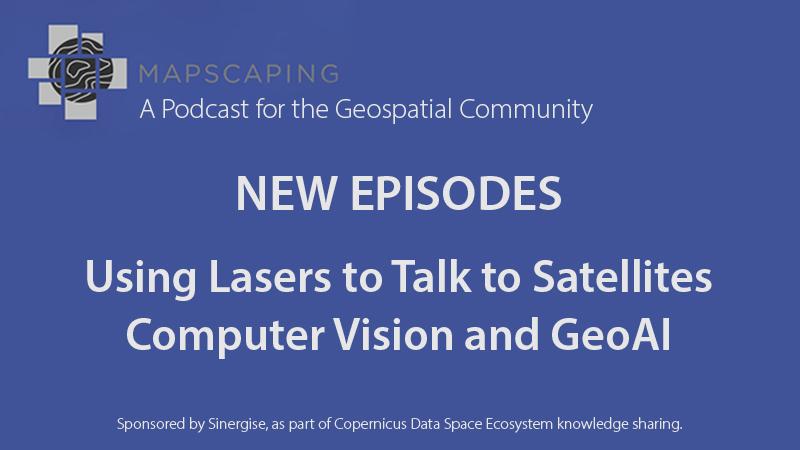MapScaping Podcasts on Laser Communication and AI for Earth Observation

Listen to the MapScaping Podcasts where we introduce a series of talks on the core problems of remote sensing, to help new users of the Copernicus Data Space Ecosystem enhance their background knowledge. We wrote about the first one already in this news post where Gordon Logie from Spark Geo discussed one of the long-standing problems of remote sensing: Does higher spectral resolution always lead to better end products? Now we invite you to listen to Using Lasers to talk to satellites and Computer Vision and GeoAI episodes.
Using Lasers to Talk to Satellites
In this episode, Jordan Wachs from the startup Spacerake.net introduces us to satellite communication and data transfer. Sending data from the satellite to Earth requires as much knowledge about frequencies and signal transmission as collecting images, and this startup proposes a radically new solution - also with its pros and cons.
Computer Vision and GeoAI
In this edition, Jordi Inglada from CNES explains many highly popular topics in image processing, such as machine learning, computer vision, deep learning, super-resolution and generative models. His explanations defuse these sometimes hyped tools and clarify their possibilities, limitations and usefulness for satellite imagery analysis. The future of Earth observation is also discussed, with access to different processing levels of imagery at huge scales mentioned as one of the main constraints for developing new applications. The Copernicus Data Space Ecosystem addresses this very challenge to help science and industry make the most of Sentinel data.
The episodes were brought to you by the MapScaping Podcast and its host Daniel O’Donohue.
Tune also into one of the previous episodes when Daniel interviews Grega Milčinski, CEO of Sinergise, where he explains everything you need to know about Sentinel Hub's services and beyond. Read more in the MapScaping Podcast.

